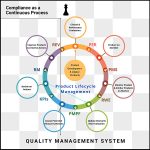In spite of continuing delays to implementation deadlines for Medical Devices Regulation (EU) 2017/745 (MDR) and the In-Vitro Diagnostic Medical Devices Regulation (EU) 2017/746 (IVDR), the requirements regarding Post-Market Surveillance (PMS), Post-Market Clinical Follow-up (PMCF), Post-Market Performance Follow-up (PMPF), and Person Responsible for Regulatory Compliance (PRRC) have been applicable since May 26, 2021, for all medical devices, and May 26, 2022, for all IVDs sold into the EU, regardless of a device’s MDR CE Marking status. So, to ensure patient safety, avoid medical issues, and safeguard competitiveness, manufacturers need to establish a PMS system.
However, as with Rome, a compliant PMS system cannot be built in a day. The considerable work onus required to maintain annual PMS in terms of channels that need to be monitored and the dedicated man-hours necessary to process it should not be underestimated. These cyclical processes require significant investments in time and specialised staff.
Patient Safety Is at the Heart of Post-Market Surveillance
“‘Post-market surveillance’ means all activities carried out by manufacturers in cooperation withother economic operators to institute and keep up to date a systematic procedure to proactively collect and review experience gained from devices they place on the market, make available on the market or put into service for the purpose of identifying any need to immediately apply any necessary corrective or preventive actions”- EU MDR Art.2 (60), EU IVDR Art.2 (63)
EU MDR and IVDR place special importance on collecting clinical and safety-related data after the conclusion of the CE certification process, approval, and market access, where proactive PMS is given special attention. It is no longer sufficient to only address issues following a complaint. Rather, regular, careful evaluations regarding the device’s viability, performance, risks and position in relation to the generally acknowledged state of the art (SOTA) in the field of medicine need to be made. The aim is to prevent issues rather than fix them once they have taken place.
A PMS To-do List
One way of analyzing and planning what needs to be done to fulfil PMS requirements and create appropriate systems and measures to ensure it is carried out effectively is to organize key activities into five major areas. Each of these areas then needs to be regularly monitored by specialist teams to identify any potential issues, before they become a problem, or worse, lead to patient harm.
- Risk Data – periodic re-evaluation for each device. When products are initially launched, manufacturers prepare risk management documents, but often these documents are not updated with new statistics and data. Ideally, this activity should be done on a regular basis because as the product is used in the market, more information about its performance is revealed. Best practice suggests that it should be done regularly as information from the market is received and, as a minimum, at least once a year.
- Published Literature – regular analysis. A regular review of published literature relating to the device’s market or to similar products is a basis of information regarding the device’s use, performance, and safety. This review indicates the product’s position in relation to generally acknowledged state of the art in the field of medicine. Key clinical evidence may highlight potential risks or even support a product’s clinical benefits, while specialist trade publications and more general nursing and healthcare sources can cover the target application market of the device. These publications also offer opinions from users and patients, as well as more general insights regarding off-label use.
- Competitor Activity – continuous tracking. The constant tracking of competitor and similar product performance not only makes good commercial sense, it provides fresh data for the ongoing evaluation of two new elements of the regulations: ‘clinical benefit’ and ‘state of the art’ (SOTA). Competitor device tracking also enables manufacturers to catch any grievances or potential issues at their onset before patient safety is put at risk. In addition, competitor benchmarking serves as a stimulus to maintain a sufficient level of differentiation from competitor devices.
- Social Media – channel monitoring. Patients will readily voice their thoughts, experiences, and opinions on social media, making these platforms crucial for obtaining real-life information directly from patients. Social media listening is also essential to ensure all device communication is aligned and any potentially misleading interactions are avoided. It only takes a “That’s great!” comment, written in the wrong context to be all too easily interpreted as support for off-label use, causing legal and reputational harm.
- Users and Patients – two-way conversation. Many potential issues with a product can only be identified once it is in everyday use. By connecting with patient groups and users of medical devices, it is possible to directly learn about any specific side effects or discomfort that may emerge. Additionally, these conversations may assist in identifying how devices are used off-label, which is something manufacturers must be fully aware of. They must also ensure that marketing and sales will never promote or infer an off-label intended use, even if it is common practice. The good news is that if the manufacturer collects sufficient clinical, safety, and performance data to enable a conformity assessment and approval, finding an off-label use can offer interesting insight leading to new claims regarding the device.
It’s Time To Establish a PMS Process
“For each device, manufacturers shall plan, establish, document, implement, maintain and update a post-market surveillance system in a manner that is proportionate to the risk class and appropriate for the type of device. That system shall be an integral part of the manufacturer’s quality management system referred to in Article 10(9)/(8).”- EU MDR Art.83 (1), EU IVDR Art. 78 (1).
Routine tasks tend to be pushed aside by busy staff as they struggle to shift focus away from daily firefighting activities. Not having a specific deadline to work towards can be a deterrent to devoting sufficient time and resource to what is a cardinal element for safeguarding patient safety, as well as company and industry reputation. PMS activity is specifically designed to help detect and flag potential issues before they landslide into problems for users and patients, therefore failing to keep up to date with the PMS data sources now available is inexcusable.
Building compliance towards EU MDR and IVDR is crucial because manufacturers maintaining devices on the market under the transitional provisions are unable to make any significant changes in design or intended purpose of that device (MDR Art. 120(3), IVDR Art. 110(3)). This puts MDR and IVDR-compliant competitors at an advantage, as they will be up to date with changes in clinical practice and product feature expectations.
Enlisting the support of specialists who are experts in satisfying PMS obligations can provide reassurance that manufacturers are meeting their obligations and are compliant. It is essential that these extensive and complete monitoring activities are carried out routinely and consistently. Now is the perfect time to make headway in establishing solid systems and processes to protect your device from potential nonconformities and safeguard users and patients.







